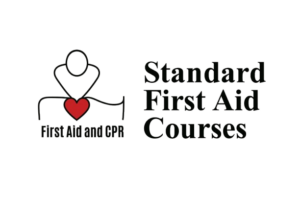Back pain refers to any form of discomfort or pain in a person’s back. Back pain is usually caused by injuries to the back, inflammation of the bones, ligaments, tendons, muscles, disk or spinal cord in the back. Back pain occurs due to irritation or inflammation of the bones, or any disorder in the organs of the chest or abdomen is rare. The most common cause of back pain is acute lumbar strain.

A person having back pain may experience symptoms depending on the cause of back pain. Generally people may suffer from stiffness of the back, swelling and tenderness on the back muscles along with back pain. More severe symptoms may include back pain that radiates towards the leg, resulting in leg
weakness, leg numbness, urinary incontinence etc. Severe back pain may also cause the person to collapse, faint, experience high fever, excessive sweating, chest pain and abdominal pain.
Disclaimer: the material posted on this page on managing back pain is for learning purposes only. To learn about recognizing and managing skeletal and muscular injuries sign up for first aid and CPR training.
Causes
Back pain is caused due to the following:
- Anxiety
- Overwork
- Ankylosing spondylitis
- Back injury
- Back strain
- Back sprain
- Coccydynia – tailbone pain
- Depression
- Chronic fatigue syndrome
- Disk herniation
- Dysmenorrhea –menstrual cramps
- Fibromyalgia
- Gallbladder disease
- Herpes zoster
- Pregnancy
- Osteoarthritis
- Sciatica
- Uterine fibroids
- Urinary tract infection
Rare causes of back pain include:
- Addison’s disease
- Abdominal aortic aneurysm
- Bladder cancer
- Bone cancer
- Cervical cancer
- Conus medullaris syndrome
- Chordoma
- Cushing’s syndrome
- Dissecting thoracic aneurysm
- Ependymoma
- Endometriosis
- Heart attack
- Hyperparathyroidism
- Kidney stones
- Leukemia
- Lymphoma
- Multiple myeloma
- Osteomyelitis
- Ovarian cancer
- Pancreatic cancer
- Polymyalgia rheumatica
- Paget’s disease
- Polymyositis
- Prostate cancer
- Rickets
- Pyelonephritis
- Scoliosis
- Renal cell carcinoma
- Scoliosis
- Sickle cell crisis
- Spinal stenosis
- Spinal cord tumor
- Uterine caner
- Spondylolisthesis
- Vertebral compression fracture
Signs and symptoms
Signs and symptoms of back pain include:
- Back pain that worsens with movement
- Muscle pain around the spine
- Back stiffness
- Back pain that resolves with rest
- Back pain does not interfere with daily activities
- Back tenderness
Signs and symptoms of severe back pain include:
- Back pain in children
- Back pain in elderly people with chronic diseases such as high blood pressure and diabetes and elderly with a history of abdominal aortic aneurysm
- Fever
- Fainting
- Difficulty walking
- Difficulty urinating
- Inability to walk
- Numbness in the buttock or groin
- Leg numbness – unilateral
- Pain that radiates to the legs
- Unusual urine color – red or pink urine
- Severe flank pain
- Severe back pain
- Weakness of the leg
Treatment
Treatment may depend on the underlying cause of the back pain. Mild pain caused by back sprain or strain may involve treatment options such as rest, keeping in mind that prolonged bed rest may worsen the condition. The patient may also take anti-inflammatory drugs to control pain. As the back pain improves, physical therapy should be initiated promptly. Consider stretching and strengthening exercises to resolve symptoms of back pain for speedy recovery. While most mild back pains improve within 1-2 weeks, severe back pain may take several months. Sometimes surgery may be required to repair the damage causing severe back pain.
Follow the treatment steps given below for quick recovery from back pain:
1. Rest
- Avoid physical activities that may trigger back pain or worsen it
- Avoid prolonged bed rest
- Avoid lifting heavy objects
- Resume walking once back pain begins to resolve
2. Cold compress
- Apply cold compresses on the back for 20-30 minutes. This should be done every 1-2 hours
3. Warm compress
- Apply warm compresses for back pain without physical injury
- Apply warm compress for 20-30 minutes. this should be repeated every 1-2 hours after the first 3 days of onset
4. Exercise
- After the first 3 days begin exercising
- Perform back stretching exercises
- Perform back range of motion exercises
5. Take pain medication
- Take over-the-counter pain medication such as acetaminophen or ibuprofen to control pain
Other treatment options may include maintaining good posture, losing weight if you are overweight and taking medication as directed by your health care provider.
Learn More
To learn more about how to prevent, recognize and manage back injuries sign up for first aid and CPR training with a credible workplace approved provider.
